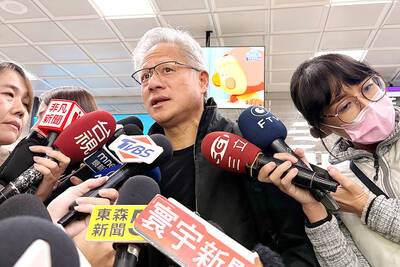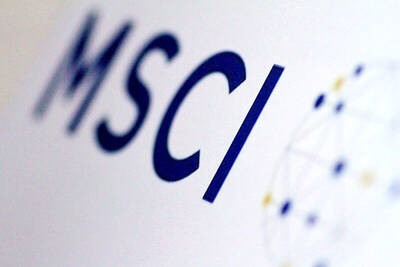The Financial Supervisory Commission (FSC) yesterday said that it is drafting a comprehensive stress test to gauge domestic banks’ ability to withstand wide swings in variables affecting risk exposure.
Unlike previous tests evaluating banks’ resilience against specific risk exposures, the latest test is to encompass macroeconomic factors such as the nation’s economic growth rate, jobless rate, the value of the New Taiwan dollar and interest rates.
Domestic banks have passed a number of stress tests simulating inclement conditions in specific segments, and have met the commission’s requirements for financial ratios.
In 2010, banks demonstrated that they were able to weather slowing GDP growth, rising unemployment and a cooling housing market and had managed to contain impacts to their financial conditions at the range required by the commission.
Stress tests on banks’ exposure to domestic home loans and loans by their China-based lending operations were carried out in 2014 and last year respectively.
The nation’s banks passed both tests, showing that they were able to contain impacts to their capital adequacy and tier 1 ratios at a level deemed manageable by the commission.
A Tier 1 capital ratio measures a bank’s financial strength based on the sum of its core equity capital and total risk-weighted assets, while capital adequacy determines the financial strength of a company.
The commission is reviewing the outcome of a stress test on banks’ exposure to yuan-linked target redemption forward (TRF) contracts that was conducted last month.
While analysts are in agreement that the worst of the concerns about TRF contracts have passed, as a majority of the contracts expired as of the end of last month, they said unexpected swings in the yuan’s strength could still cause significant losses for banks.
The FSC’s TRF stress test simulating a weakened yuan of 6.8 per US dollar was deemed inadequate, as the yuan is expected to fall to 7.5 against the greenback by the end of this year, Daiwa Capital Markets analyst Christie Chien (簡民惠) said in a client note last week.
Since the Chinese central bank devalued the yuan in August last year, TRFs have caused widespread losses for investors, while banks are facing rising exposure to the instrument’s refundable deposit against potential defaults by their clients.
Banks have also lost highly profitable items in their product mix as sentiments toward the troubled derivative soured.
PROBE
In related news, the commission said that it has asked its Financial Examination Bureau to probe allegations by New Power Party Legislator Huang Kuo-chang (黃國昌) that a number of banks assisted their clients to produce false financial statements and set up offshore accounts in a bid to promote TRF sales.

PERSISTENT RUMORS: Nvidia’s CEO said the firm is not in talks to sell AI chips to China, but he would welcome a change in US policy barring the activity Nvidia Corp CEO Jensen Huang (黃仁勳) said his company is not in discussions to sell its Blackwell artificial intelligence (AI) chips to Chinese firms, waving off speculation it is trying to engineer a return to the world’s largest semiconductor market. Huang, who arrived in Taiwan yesterday ahead of meetings with longtime partner Taiwan Semiconductor Manufacturing Co (TSMC, 台積電), took the opportunity to clarify recent comments about the US-China AI race. The Nvidia head caused a stir in an interview this week with the Financial Times, in which he was quoted as saying “China will win” the AI race. Huang yesterday said

Nissan Motor Co has agreed to sell its global headquarters in Yokohama for ¥97 billion (US$630 million) to a group sponsored by Taiwanese autoparts maker Minth Group (敏實集團), as the struggling automaker seeks to shore up its financial position. The acquisition is led by a special purchase company managed by KJR Management Ltd, a Japanese real-estate unit of private equity giant KKR & Co, people familiar with the matter said. KJR said it would act as asset manager together with Mizuho Real Estate Management Co. Nissan is undergoing a broad cost-cutting campaign by eliminating jobs and shuttering plants as it grapples

Japanese technology giant Softbank Group Corp said Tuesday it has sold its stake in Nvidia Corp, raising US$5.8 billion to pour into other investments. It also reported its profit nearly tripled in the first half of this fiscal year from a year earlier. Tokyo-based Softbank said it sold the stake in Silicon Vally-based Nvidia last month, a move that reflects its shift in focus to OpenAI, owner of the artificial intelligence (AI) chatbot ChatGPT. Softbank reported its profit in the April-to-September period soared to about 2.5 trillion yen (about US$13 billion). Its sales for the six month period rose 7.7 percent year-on-year

MORE WEIGHT: The national weighting was raised in one index while holding steady in two others, while several companies rose or fell in prominence MSCI Inc, a global index provider, has raised Taiwan’s weighting in one of its major indices and left the country’s weighting unchanged in two other indices after a regular index review. In a statement released on Thursday, MSCI said it has upgraded Taiwan’s weighting in the MSCI All-Country World Index by 0.02 percentage points to 2.25 percent, while maintaining the weighting in the MSCI Emerging Markets Index, the most closely watched by foreign institutional investors, at 20.46 percent. Additionally, the index provider has left Taiwan’s weighting in the MSCI All-Country Asia ex-Japan Index unchanged at 23.15 percent. The latest index adjustments are to